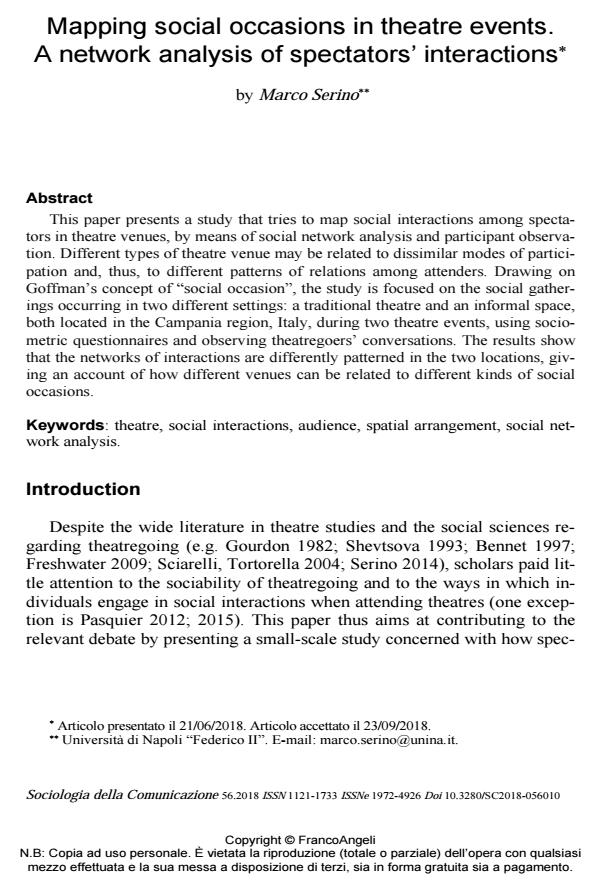Mapping social occasions in theatre events. A network analysis of spectators’ interactions
Journal title SOCIOLOGIA DELLA COMUNICAZIONE
Author/s Marco Serino
Publishing Year 2018 Issue 2018/56
Language Italian Pages 23 P. 165-187 File size 489 KB
DOI 10.3280/SC2018-056010
DOI is like a bar code for intellectual property: to have more infomation
click here
Below, you can see the article first page
If you want to buy this article in PDF format, you can do it, following the instructions to buy download credits

FrancoAngeli is member of Publishers International Linking Association, Inc (PILA), a not-for-profit association which run the CrossRef service enabling links to and from online scholarly content.
This paper presents a study that tries to map social interactions among spectators in theatre venues, by means of social network analysis and participant observation. Different types of theatre venue may be related to dissimilar modes of participation and, thus, to different patterns of relations among attenders. Drawing on Goffman’s concept of "social occasion", the study is focused on the social gatherings occurring in two different settings: a traditional theatre and an informal space, both located in the Campania region, Italy, during two theatre events, using sociometric questionnaires and observing theatregoers’ conversations. The results show that the networks of interactions are differently patterned in the two locations, giving an account of how different venues can be related to different kinds of social occasions.
Keywords: Theatre, social interactions, audience, spatial arrangement, social network analysis.
Marco Serino, Mapping social occasions in theatre events. A network analysis of spectators’ interactions in "SOCIOLOGIA DELLA COMUNICAZIONE " 56/2018, pp 165-187, DOI: 10.3280/SC2018-056010